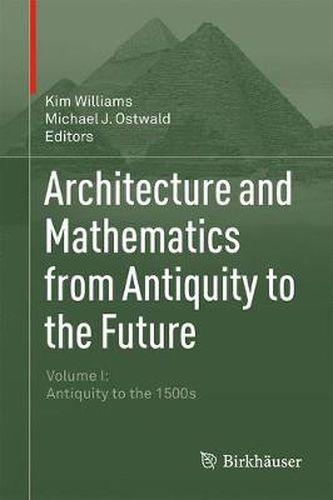Readings Newsletter
Become a Readings Member to make your shopping experience even easier.
Sign in or sign up for free!
You’re not far away from qualifying for FREE standard shipping within Australia
You’ve qualified for FREE standard shipping within Australia
The cart is loading…






The aim of this collection of essays is to present a broad portrait of the ways in which two seemingly different disciplines are interconnected. The diversity and varied texture of the essays richly illustrates the affinity between architecture and mathematics. As the almost 100 papers presented in this two-volume publication show, every age and every culture has relied on principles of mathematics incorporated in their works of architecture to imbue their built environment with meaning and order. Included are discussions of geometry, proportional systems, linear algebra, periodic and aperiodic tilings, fractals, perspective, computer science and mechanics. Western architecture of every period is examined: Egyptian, Roman, Medieval, Renaissance, Baroque, Enlightenment, twentieth-century and beyond, as is the architecture of Turkey, China, India, Japan, Australia and Islam. The mathematical nature of the architecture of Leon Battista Alberti, Andrea Palladio and Frank Lloyd Wright is examined, and the philosophical background behind Renaissance architecture is explored. Contributors come from a wide range of disciplines and cultural backgrounds: architects, mathematicians, historians, theoreticians, scientists and educators from the world over. Architecture may be seen and understood in a new light, by professionals as well as non-professionals.
$9.00 standard shipping within Australia
FREE standard shipping within Australia for orders over $100.00
Express & International shipping calculated at checkout
The aim of this collection of essays is to present a broad portrait of the ways in which two seemingly different disciplines are interconnected. The diversity and varied texture of the essays richly illustrates the affinity between architecture and mathematics. As the almost 100 papers presented in this two-volume publication show, every age and every culture has relied on principles of mathematics incorporated in their works of architecture to imbue their built environment with meaning and order. Included are discussions of geometry, proportional systems, linear algebra, periodic and aperiodic tilings, fractals, perspective, computer science and mechanics. Western architecture of every period is examined: Egyptian, Roman, Medieval, Renaissance, Baroque, Enlightenment, twentieth-century and beyond, as is the architecture of Turkey, China, India, Japan, Australia and Islam. The mathematical nature of the architecture of Leon Battista Alberti, Andrea Palladio and Frank Lloyd Wright is examined, and the philosophical background behind Renaissance architecture is explored. Contributors come from a wide range of disciplines and cultural backgrounds: architects, mathematicians, historians, theoreticians, scientists and educators from the world over. Architecture may be seen and understood in a new light, by professionals as well as non-professionals.